CODEINE
- CAS NO.:76-57-3
- Empirical Formula: C18H21NO3
- Molecular Weight: 299.37
- MDL number: MFCD00190150
- EINECS: 200-969-1
- SAFETY DATA SHEET (SDS)
- Update Date: 2024-12-18 14:07:02

What is CODEINE?
Absorption
Absorption
Codeine is absorbed from the gastrointestinal tract. The maximum plasma concentration occurs 60 minutes after administration .
Food Effects
When 60 mg codeine sulfate was given 30 minutes post-ingestion of a high high-calorie meal, there was no significant change in the absorption of codeine .
Steady-state concentration
The administration of 15 mg codeine sulfate every 4 hours for 5 days lead to steady-state concentrations of codeine, morphine, morphine-3-glucuronide (M3G) and morphine-6-glucuronide (M6G) within 48 hours .
Toxicity
Oral LD50: 427 mg kg-1 (rat) .
Overdose/toxicity
Symptoms of opioid toxicity may include confusion, somnolence, shallow breathing, constricted pupils, nausea, vomiting, constipation and a lack of appetite. In severe cases, symptoms of circulatory and respiratory depression may ensue, which may be life-threatening or fatal , .
Teratogenic effects
This drug is classified as a pregnancy Category C drug. There are no adequate and well-controlled studies completed in pregnant women. Codeine should only be used during pregnancy if the potential benefit outweighs the potential risk of the drug to the fetus .
Codeine has shown embryolethal and fetotoxic effects in the hamster, rat as well as mouse models at about 2-4 times the maximum recommended human dose . Maternally toxic doses that were about 7 times the maximum recommended human dose of 360 mg/day, were associated with evidence of bone resorption and incomplete bone ossification. Codeine did not demonstrate evidence of embrytoxicity or fetotoxicity in the rabbit model at doses up to 2 times the maximum recommended human dose of 360 mg/day based on a body surface area comparison .
Nonteratogenic effects
Neonatal codeine withdrawal has been observed in infants born to addicted and non-addicted mothers who ingested codeine-containing medications in the days before delivery. Common symptoms of narcotic withdrawal include irritability, excessive crying, tremors, hyperreflexia, seizures, fever, vomiting, diarrhea, and poor feeding. These signs may be observed shortly following birth and may require specific treatment .
Codeine (30 mg/kg) given subcutaneously to pregnant rats during gestation and for 25 days after delivery increased the rate of neonatal mortality at birth. The dose given was 0.8 times the maximum recommended human dose of 360 mg/day .
The use in breastfeeding/nursing
Codeine is secreted into human milk. The maternal use of codeine can potentially lead to serious adverse reactions, including death, in nursing infants .
Description
Codein phosphate and hydrochloride caused contact dermatitis in a worker in the production of opium alkaloids. Codeine bitartrate caused contact dermatitis in a worker in the production of concentrated poppy straw. Codeine was a sensitizer in a laboratory worker at an opiate-manufacturing pharmaceutical company, also sensitive to the baine.
Description
(–)-Codeine is the naturally occurring enantiomer of a polycyclic alkaloid found in the opium poppy. It is used in cough medicines and to treat diarrhea, pain, and irritable bowel syndrome. Commercial amounts were first prepared by methylating morphine, and many complete syntheses of (–)-, (+)-, and racemic codeine have been reported. A?new synthesis of the racemic compound was developed?last year by P. Magnus and co-workers.
Description
Codeine (CRM) (Item No. ISO60140) is a certified reference material categorized as an opioid. Like other opioid analgesics, codeine is commonly abused. Codeine is regulated as a Schedule II compound in the United States. Codeine (CRM) (Item No. ISO60140) is provided as a DEA exempt preparation. This product is intended for research and forensic applications.
Chemical properties
White Solid
Chemical properties
Codeine, also known as methylmorphine, C18H21NO3· H2O, is a colorless white crystalline substance, slightly soluble in water, soluble in alcohol and chloroform, effloresces slowly in dry air.
The Uses of CODEINE
Codeine is used in medicine for its narcoticanalgesic action. It is used as a sedative incough mixtures. Codeine occurs in opiumfrom 0.7% to 2.5%. It is prepared frommorphine by methylating the phenolic OHgroup of the morphine. It is also obtained byextraction of opium.
The Uses of CODEINE
Present in opium from 0.7% to 2.5%, depending on the source. Weak narcotic analgesic, perhaps due to conversion to morphine, with minimal hypnotic properties; potent antitussive. Controlled substance (opiate)
The Uses of CODEINE
Codeine is derived from opium by extraction or by the methylation of morphine. For medical use, codeine is usually offered as the dichloride, phosphate, or sulfate. Codeine is habit forming. Codeine is known to exacerbate urticaria (familiarly known as hives). Since codeine is incorporated in numerous prescription medicines for headache, heartburn, fatigue, coughing, and relief of aches and pains, persons with a history of urticaria should make this fact known to their physician. Codeine is sometimes used in cases of acute pericarditis to relieve severe chest pains in early phases of disease. Codeine is sometimes used in drug therapy of renal (kidney) diseases.
Background
The relief of pain (analgesia) is a primary goal for enhancing the quality of life of patients and for increasing the ability of patients to engage in day to day activities. Codeine, an opioid analgesic, was originally approved in the US in 1950 and is a drug used to decrease pain by increasing the threshold for pain without impairing consciousness or altering other sensory functions. Opiates such as codeine are derived from the poppy plant, Papaver somniferum (Papaveraceae).
Codeine is utilized as a central analgesic, sedative, hypnotic, antinociceptive, and antiperistaltic agent, and is also recommended in certain diseases with incessant coughing.
Indications
Codeine sulfate is a form of this drug that is commonly used. It is available in tablet form and indicated for the relief of mild to moderately severe pain, where the use of an opioid analgesic is appropriate .
The solution form is used by itself or combined in a syrup with other drugs and is used as a cough suppressant in adults aged 18 and above , .
Definition
ChEBI: A morphinane alkaloid found in the opium poppy, Papaver somniferum var. album; has analgesic, anti-tussive and anti-diarrhoeal properties.
Definition
codeine: An alkaloid C18H21NO3found in opium. It is structurally similarto morphine, from which it isproduced, and is used in the form ofthe sulphate or phosphate as apainkiller and cough medicine.Codeine is converted into morphinein the liver. It is used to some extentas a recreational drug. In the UK it isa class B drug but can be obtained incomposite over-the-counter preparationsin which it has a low concentrationand is combined with paracetamolor ibuprofen. See also opioids.
brand name
Algisedal;Codol;Diarrest;Novacetol;Sedarene.
World Health Organization (WHO)
Codeine, which has antitussive, opioid analgesic and antidianhoeal activity, was first extracted from opium in 1832 and has since been widely used in medicine. The development of dependence and its potential for abuse resulted in the control af the substance under Schedule II of the 1961 Single Convention on Narcotic Drugs. Preparations containing codeine remain widely available and are included in the WHO Model List of Essential Drugs.(Reference: (WHTAC1) The Use of Essential Drugs, 2nd Report of the WHO Expert Committee, 722, , 1985)
Biological Functions
Like morphine, codeine is a naturally occurring opioid found in the poppy plant. Codeine is indicated for the treatment of mild to moderate pain and for its antitussive effects. It is widely used as an opioid antitussive because at antitussive doses it has few side effects and has excellent oral bioavailability. Codeine is metabolized in part to morphine, which is believed to account for its analgesic effect. It is one of the most commonly used opioids in combination with nonopioids for the relief of pain. The administration of 30 mg of codeine in combination with aspirin is equivalent in analgesic effect to the administration of 65 mg of codeine. The combination of the drugs has the advantage of reducing the amount of opioid required for pain relief and abolition of the pain via two distinct mechanisms, inhibition of prostanoid synthesis and opioid inhibition of nociceptive transmission. When given alone, orally administered codeine has about one-tenth to one-fifth the potency of morphine for the relief of pain. In addition, IV codeine has a greater tendency to release histamine and produce vasodilation and hypotension than does morphine. Thus, the use of IV codeine is rare. Codeine is rarely addictive and produces little euphoria.
General Description
Colorless to white crystalline solid or white powder. Sublimes at 284°F. Odorless. Bitter taste. pH (saturated aqueous solution) 9.8.
General Description
Codeine is an alkaloid that occurs naturally in opium, butthe amount present is usually too small to be of commercialimportance. Consequently, most commercial codeine is preparedfrom morphine by methylating the phenolic OHgroup. It occurs as levorotatory, colorless, efflorescent crystals,or as a white crystalline powder. It is light sensitive.Codeine is a monoacidic base and readily forms salts withacids, with the most important being the sulfate and thephosphate. The acetate and methylbromide derivatives havebeen used to a limited extent in cough preparations.The general pharmacological action of codeine is similarto that of morphine, but it does not possess the sameanalgesic potency.
Air & Water Reactions
CODEINE is light sensitive and sensitive to prolonged exposure to air. Insoluble in water.
Reactivity Profile
CODEINE is incompatible with bromides, iodides and salts of heavy metals. . CODEINE is an amine. Amines are chemical bases. They neutralize acids to form salts plus water. These acid-base reactions are exothermic. The amount of heat that is evolved per mole of amine in a neutralization is largely independent of the strength of the amine as a base. Amines may be incompatible with isocyanates, halogenated organics, peroxides, phenols (acidic), epoxides, anhydrides, and acid halides. Flammable gaseous hydrogen is generated by amines in combination with strong reducing agents, such as hydrides.
Hazard
Habit-forming narcotic, sale legally restricted.
Health Hazard
The toxic effects due to codeine are similarbut less toxic than those of morphineand other opium alkaloids. An overdosecan cause respiratory failure. It is a weakdepressant of the central nervous system.It also exhibits stimulant action. Toxicsymptoms from high dosages may includedrowsiness, sleep, tremors, excitement, andhallucinations. It may also produce gastricpains and constipation. An oral LD50 value in rats is 427 mg/kg. The habit-forming effectsof codeine are lower than those associatedwith morphine.
Nagamatsu and coworkers (1985) havereported in vitro formation of codeinonefrom codeine by rat or guinea pig liverhomogenate. Codeinone may be a metabolicintermediate in the presence of nicotinamideadenine dinucleotide (NAD). Its acute toxicityin mice was determined to be 30 timeshigher than that of codeine.
Fire Hazard
CODEINE is combustible.
Contact allergens
Codeine has been reported as an occupational sensitizer in workers in the production of opium alkaloids. Codeine has been responsible for fixed drug eruptions or generalized dermatitis. Cross-sensitivity is expected to morphine.
Pharmacokinetics
General effects
Codeine is a weak narcotic pain reliever and cough suppressant that is similar to morphine and hydrocodone. A small amount of ingested codeine is converted to morphine in the body. Codeine increases tolerance to pain, reducing existing discomfort. In addition to decreasing pain, codeine also causes sedation, drowsiness, and respiratory depression .
Antitussive activity
This drug has shown antitussive activity in clinical trials and has been effective in cough secondary to tuberculosis and insomnia due to coughing . Codeine suppresses the cough reflex through a direct effect on the cough center in the medulla .
Effects on intestinal motility
Codeine may reduce intestinal motility through both a local and possibly central mechanism of action . This may possibly lead to constipation . The chronic use of opioids, including codeine sulfate, may lead to obstructive bowel disease, particularly in patients with underlying disorders of intestinal motility .
Effects on the central nervous system
Codeine phosphate is an opioid analgesic with uses similar to those of morphine, but is much less potent as an analgesic. Its primary site of action is at the mu opioid receptors distributed throughout the central nervous system. The sedative activities of codeine are less potent than those of morphine . Codeine may cause respiratory system depression by the activation of μ-opioid receptors at specific sites in the central nervous system .
Effects on blood pressure
This drug poses an increased risk of compromised ability to maintain blood pressure due to peripheral vasodilation and other mechanisms .
Effects on chronic cancer pain and other types of pain
Codeine is an opioid analgesic with similar indications to those of morphine, however, is much less potent in its pain alleviating properties. Its primary action takes place at the mu opioid receptors, which are distributed throughout the central nervous system. The average duration of action is about 4 hours .
Regular dosing of opioid analgesics such as codeine in patients with severe cancer pain has been well documented to improve symptoms , .
Pharmacology
Codeine is a constituent of opium. Up to 10% of a dose of codeine is metabolised by the hepatic microsomal enzyme CYP2D6 to morphine, which contributes significantly to its analgesic effect. The rest is metabolised in the liver to norcodeine and then conjugated to produce glucuronide conjugates of codeine, norcodeine and morphine. Codeine is considerably less potent than morphine. A round 8% of Western Europeans are deficient in the CYP2D6 enzyme and may not experience adequate analgesia with codeine. S imilarly, with super-metabolisers, there may be problems with opioid toxicity; particular care is needed in the breastfeeding mother as morphine is transferred in milk. Codeine can cause significant histamine release, and intravenous administration should be avoided. It has marked antitussive effects and also causes significant constipation. It is often combined with paracetamol.
Metabolism
Approximately 70 to 80% of the ingested dose of codeine is metabolized in the liver by conjugation with glucuronic acid to codeine-6- glucuronide (C6G) and by O-demethylation to morphine (about 5-10%) and N-demethylation to norcodeine (about 10%) respectively. UDP-glucuronosyltransferase (UGT) 2B7 and 2B4 are the major metabolic enzymes mediating the glucurodination of codeine to the metabolite, codeine 6 glucuronide.
Cytochrome P450 2D6 is the major enzyme responsible for the transformation of codeine to morphine and P450 3A4 is the main enzyme mediating the conversion of codeine to norcodeine. Morphine and norcodeine are then further metabolized by conjugation with glucuronic acid. The glucuronide metabolites of morphine are morphine-3-glucuronide (M3G) and_ morphine-6-glucuronide _(M6G). Morphine and M6G have been proven to have analgesic activity in humans. The analgesic activity of C6G in humans is not known at this time. Norcodeine and M3G are generally not considered to have analgesic properties .
Purification Methods
Codeine crystallises from water or aqueous EtOH. Dry it at 80o. Evaporation of a CHCl3 extract gives a colourless glass which crystallises on scratching. It crystallises from H2O as the monohydrate, m 157-158.5o, and has [] D -136o (c 2.8, EtOH). The hydrobromide crystallises in needles from H2O, and effervesces at 151-160o, solidifies and remelts with extensive decomposition at 273-278o. It sublimes at 100o/0.03mm. [Gates J Am Chem Soc 75 4340 1953, Dauben et al. J Org Chem 44 1567 1979, Beilstein 27 II 136, 27 III/IV 2228.]
Properties of CODEINE
| Melting point: | 156-158?C |
| Boiling point: | 440.69°C (rough estimate) |
| Density | 1.3200 |
| refractive index | 1.5500 (estimate) |
| Flash point: | 9℃ |
| storage temp. | 2-8°C |
| solubility | Soluble in boiling water, freely soluble in ethanol (96 per cent). |
| pka | 8.21(at 25℃) |
| form | Solid |
| color | White to Pale Brown |
| Water Solubility | 47.62g/L(25 ºC) |
| Stability: | Stable, but light sensitive. Combustible. Incompatible with strong oxidizing agents, bromides, iodides, heavy metal salts. |
| EPA Substance Registry System | Codeine (76-57-3) |
Safety information for CODEINE
| Signal word | Danger |
| Pictogram(s) |
 Flame Flammables GHS02  Skull and Crossbones Acute Toxicity GHS06  Health Hazard GHS08 |
| GHS Hazard Statements |
H225:Flammable liquids H370:Specific target organ toxicity, single exposure |
| Precautionary Statement Codes |
P210:Keep away from heat/sparks/open flames/hot surfaces. — No smoking. P260:Do not breathe dust/fume/gas/mist/vapours/spray. P280:Wear protective gloves/protective clothing/eye protection/face protection. P311:Call a POISON CENTER or doctor/physician. P301+P310:IF SWALLOWED: Immediately call a POISON CENTER or doctor/physician. |
Computed Descriptors for CODEINE
New Products
Tert-butyl bis(2-chloroethyl)carbamate (S)-3-Aminobutanenitrile hydrochloride N-Boc-D-alaninol N-BOC-D/L-ALANINOL N-octanoyl benzotriazole 4-Hydrazinobenzoic acid 3,4-Dibenzyloxybenzaldehyde 1,1’-CARBONYLDIIMIDAZOLE R-2-BENZYLOXY PROPIONIC ACID 1,1’-CARBONYLDI (1,2-4 TRIAZOLE) 4-HYDROXY BENZYL ALCOHOL 3-NITRO-2-METHYL ANILINE (2-Hydroxyphenyl)acetonitrile 4-Bromopyrazole 5-BROMO-2CYANO PYRIDINE 5,6-Dimethoxyindanone 5-broMo-2-chloro-N-cyclopentylpyriMidin-4-aMine 4-methoxy-3,5-dinitropyridine 2-(Cyanocyclohexyl)acetic acid 2-aminopropyl benzoate hydrochloride 1-(4-(aminomethyl)benzyl)urea hydrochloride tert-butyl 4- (ureidomethyl)benzylcarbamate diethyl 2-(2-((tertbutoxycarbonyl)amino) ethyl)malonate Ethyl-2-chloro((4-methoxyphenyl)hydrazono)acetateRelated products of tetrahydrofuran

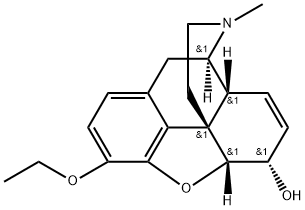

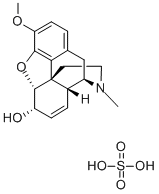

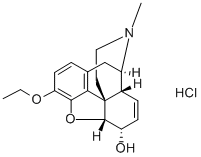
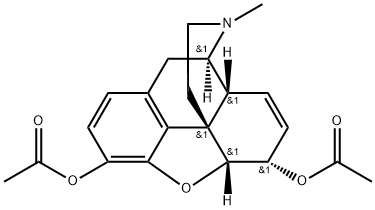
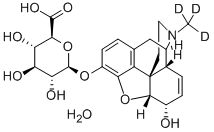
You may like
-
 873-83-6 6-Aminouracil (or) 4-Amino-2,6- dihydroxypyrimidine, (or) 6-Amino2,4-pyrimidinediol 99%View Details
873-83-6 6-Aminouracil (or) 4-Amino-2,6- dihydroxypyrimidine, (or) 6-Amino2,4-pyrimidinediol 99%View Details
873-83-6 -
 55441-95-7 99%View Details
55441-95-7 99%View Details
55441-95-7 -
 N-Vinylformamide 99%View Details
N-Vinylformamide 99%View Details
13162-05-5 -
 Chloro Uracil 1820-81-1 99%View Details
Chloro Uracil 1820-81-1 99%View Details
1820-81-1 -
 207557-35-5 99%View Details
207557-35-5 99%View Details
207557-35-5 -
 2-ethyl-6-methyl-3-hydroxypyridine succinate 99%View Details
2-ethyl-6-methyl-3-hydroxypyridine succinate 99%View Details
127464-43-1 -
 2-ETHYLPYRIDINE 100-71-0 99%View Details
2-ETHYLPYRIDINE 100-71-0 99%View Details
100-71-0 -
 181228-33-1 (S)-Methyl 3-amino-2-((tert-butoxycarbonyl)amino)propanote Hydrochloride (DAP-OMe. HCl) 99%View Details
181228-33-1 (S)-Methyl 3-amino-2-((tert-butoxycarbonyl)amino)propanote Hydrochloride (DAP-OMe. HCl) 99%View Details
181228-33-1